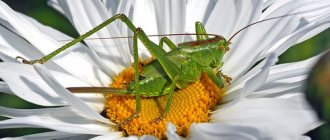project on the theme “The World of Butterflies”
"The desire to know more about those animals
that are interesting to you will allow you to increase
your level of intelligence"
Research hypothesis - Any animal in our world is a mystery.
Butterflies are such beautiful, bright, fragile creatures. Don't you want to know more about them? For example, how many varieties of butterflies are there and why do they have such beautiful names? What is the peculiarity of the structure of butterfly wings? How far can butterflies travel? What transformations occur to them? Are there harmful butterflies? Can a butterfly live at home, what will it eat, where will it sleep? That's why I decided to research the life of butterflies to answer all these questions.
Purpose of the study: to study the characteristics of the life of butterflies, to find answers to the questions posed.
Research objectives:
— expand knowledge about the world around us;
— collect and study information about butterflies from additional sources;
— organize the selection of material with parents;
— observe the behavior and life of butterflies during the summer holidays;
- determine whether all butterflies are beneficial;
Stages of work: Stage 1 I outline goals and objectives: I want to learn more about butterflies, how to care for them, how they sleep; Experimentally, I want to find out if the butterfly lives at home, what it will eat, where it will sleep. Can a butterfly even live at home? 2nd stage I study literature, look for information about butterflies, talk with adults. 3rd stage I conduct an experiment, observe, draw conclusions, prepare materials for a presentation.
The relevance of research:
Butterflies are numerous and very beautiful insects, their role is varied. Observing the life and development of butterflies broadens children's horizons and promotes a caring attitude towards nature. The results of the study can be used in classes on the surrounding world at school.
As a result of studying the material on this topic, it was found that the wonderful world of butterflies is fraught with many unsolved mysteries.
Butterflies bring both harm to humans (caterpillars destroy crops) and many benefits. They are the second most numerous pollinators after bees.
Butterflies cannot be destroyed excessively, as this will lead to an environmental disaster.
To complete this work, I used materials from encyclopedias and Internet sites.
The result of the work was that my classmates became acquainted with my work and enriched them with new knowledge.
Introduction.
You are right. With one airy outline I am so sweet
All my velvet with its living blinking - Only two wings. Don't ask: where did it come from? Where am I in a hurry?
Here I lightly sank onto the flower.
And here I am breathing. How long, without purpose, without effort, do I want to breathe?
Just now, sparkling, I will spread my wings.
And I'll fly away. Afanasy Fet
One warm summer day, when I was walking in my grandmother’s garden, my attention was attracted by butterflies fluttering over a flower. I've heard these insects called "flying flowers." I looked at them more closely, they are really very beautiful. Painted in bright colors, these creatures fluttered from flower to flower, feeding on sweet nectar. I really wanted to catch and hold this beautiful creature in my hands, but I understood that I could harm its fragile wings. It was a butterfly!
And I realized that there is no more delightful decoration created by nature than butterflies. I wondered how many other different butterflies there are in the world that I don’t know about. Having read, together with my mother, a lot of interesting material from encyclopedias and anthologies about beautiful butterflies, I decided to tell you and show you everything that I learned about these amazing insects.
Study of the life of butterflies.
Butterflies are one of the most beautiful living creatures on Earth! They look like flowers that have come to life; the whimsicality and brightness of the color of their wings is truly fabulous. Many fairy tales and legends are written about butterflies, which scientists call rather boringly: Lepidoptera. But their names are beautiful, these are often the names of Greek gods and heroes: Apollo, Psyche, Hector, Icarus. This is how people expressed their admiration for the bright beauty of butterflies.
And the scales are the most important thing in their outfit - the same “pollen” that is so easily erased by the careless touches of the merciless fingers of some butterfly “lovers”...
At the same time, in collections collected more than a hundred years ago, butterflies sparkle with the same freshness of colors.
In the myths of ancient Greece, butterflies were often a symbol of love, and in ancient Greek the butterfly and the soul were called in one word - “psyche”. The peoples of Southeast Asia respect butterflies. Here they believe that seeing a butterfly in your home is lucky, because it symbolizes all the best in a person’s life.
In Japan, the ritual “butterfly dance”, expressing the joy of life, traditionally opens ceremonial processions and holidays.
Among Christians, a butterfly is sometimes depicted sitting on the hand of the infant Christ and symbolizes the rebirth and resurrection of the soul.
Beautiful butterflies have always attracted human attention. But not all of us know what a huge number of different species of butterflies exist, differing in size, shape, and color. And why do some butterflies have brightly colored wings, while others, on the contrary, are very pale and invisible in the environment? Carefree butterflies are constantly threatened by something. These can be various parasites, predators, diseases and simply natural phenomena. Therefore, they have to look for different methods of protection. One of the ways to protect against enemies is the color of the wings. The body and wings of the butterfly are covered with tiny scales. These scales are of different colors, and they, like a colored mosaic, create a pattern. Such patterns can be very beautiful and bright or, on the contrary, pale and unsightly.
Some butterflies are more modest in color. Some, like the oakleaf butterfly, are excellent imitations of leaves.
Thus, butterflies hide from predators by merging with their environment. Many butterflies have bright, eye-catching wing colors, which warn predators that the butterfly has a very unpleasant taste. Some harmless butterflies copy the colors of unpalatable ones so that predators will leave them alone. Sometimes the females of some butterflies of the same species are completely different from each other, because they live in different places and copy the warning coloration of the poisonous butterflies there.
Other butterflies have wings decorated with eye spots and tails. This way they attract the attention of enemies to the wings, distracting them from the most important thing - the head. This bright coloring is intended to confuse a predator, such as a spider, into thinking it is coming from the wrong direction. After further examination of the drawing, it becomes clear that this does not seem to be the animal that they wanted to eat.
The same system works for birds, which, flying over a butterfly, see not an insect, but a frightening image that does not in any way resemble food. For example, from a distance, the swallowtail's eye spots look like a squinting member of the cat family. And a surprise awaits a bird that wants to feast on a day or night Peacock's eye: the butterfly will open its wings and the hunter will see two pairs of scary eyes. We admire the bright beauty of butterflies fluttering over flowers, and do not think about the fact that this variety of colors is just the protection of fragile creatures from numerous enemies.
Butterflies are divided into two large groups: day and night butterflies.
There are a large number of butterflies in the world. Many species are described, however, there are also many undescribed species.
Did you know that some butterflies can travel intercontinentally? Yes, they cover enormous distances, while being well oriented. The Monarch butterfly can fly 1000 kilometers without stopping. The burdock flies from Europe to Africa. There it lays eggs and dies. And the descendants of those who flew to Africa go to Europe next year. White moths, monarchs, and some hawk moths also travel.
During her short life, a female butterfly can lay more than 1,000 eggs.
Butterflies are born to die, giving life to a new generation. Most live only a few days, with the exception of the monarch, which can live up to six months.
In addition to the tropical butterflies that are familiar to us, there are also arctic butterflies. They are inconspicuous in appearance, their wings are not bright, but whitish or almost transparent, as if made of glass.
Butterflies are the best plant pollinators. And some flowers are generally pollinated only by butterflies. Flying from flower to flower, butterflies collect nectar and pollinate plants. If the butterfly wakes up in early spring, when the flowers have not yet opened, it can feast on sweet birch sap.
How does a butterfly work?
The first thing we notice about a butterfly is its bright wings flickering over a path or lawn. Wings can be of different sizes, different colors, but there is something in common between them. Firstly, there are always four of them. Secondly, they are covered with tiny colored scales, like a tiled roof - a large butterfly has up to a million such scales on its wings. For this property, butterflies are called lepidoptera.
The largest moth in the world is Attacusaltas (Brazilian Agripina). Its wingspan is more than 30 cm and it is often mistaken for a bird. And the smallest is 2mm (Acetozea from England). Sitting on the ground or flower, butterflies open their wings, showing their upper, usually brighter side. They need this coloring to see each other from afar, and also to scare away enemies. There is camouflage coloring on the underside of the wings; it helps to hide from these enemies.
Another distinctive feature of butterflies is their soft proboscis. It is always coiled and unrolls when the butterfly eats.
Where do you think the butterfly's taste organs are? After all, she has no language. In the proboscis? But they didn’t guess right. Imagine - on your paws. And this “tongue” of hers is 2000 times more sensitive than that of a person. As soon as the butterfly touches tasty pollen or sweet juice with its paws, it immediately understands what’s what, and its proboscis instantly unfolds. The length of the proboscis, by the way, depends on the depth of the calyx of the flower on which butterflies of a certain species feed. Sometimes the proboscis is very short, and sometimes it is long, up to 35 centimeters, like that of the Madagascar hawk moth.
Do butterflies have a heart? Yes, I have. Only not in the chest, but... in the abdomen. And their blood is not red, but green. It does not contain hemoglobin, and it does not carry oxygen, like in humans, but delivers nutrients, various hormones and enzymes to all insect cells.
The structure of a butterfly.
Like all insects, the body of butterflies is divided into three main sections: head, chest and abdomen. On the outside, it is protected by a hard chitinous covering that forms the exoskeleton. Their head is inactive, their eyes are large, round or oval, surrounded by hairs and occupy a significant part of the head. The antennae are located on the parietal part of the head and are sensory organs that perceive odors and air vibrations. The antennae also help maintain balance when flying.
The butterfly breathes through the thinnest tubes - tracheas, which permeate its entire body. They are connected to the outside world by two openings on the chest and sixteen on the abdomen.
Each type of butterfly has its own smell. Sometimes it is pleasant - some butterflies smell of vanilla, mignonette, strawberries, geranium, and chocolate. Male cabbageweeds smell of red geranium, reptiles smell of mignonette, and rutabagas smell of lemon flowers. Some butterflies retain attractive scents even after they are dissected for collections.
How a butterfly appears.
There are hundreds of species of butterflies, and their diversity is amazing. But the most amazing thing is that the butterflies, as in a real fairy tale, experience a complete transformation! They're not the only "completely metamorphosed insects," as scientists say, but here the difference between a worm-like, voracious caterpillar and a bright, sky-fluttering butterfly is especially striking. The adult butterfly lays a larva. A small caterpillar emerges from it, but does not immediately turn into a butterfly. In order for a caterpillar to turn into a butterfly, it needs to form for a long time. First she turns into a doll. Then it remains in this state for some time, gradually develops and turns into a beautiful butterfly. When a butterfly emerges from its chrysalis, its wings are soft and wrinkled. However, they quickly harden in the sun.
Interesting facts: - The pupa is like a safe that protects the insect's body when it changes its shape. — The babies that hatch from insect eggs are called larvae, although people often simply call them caterpillars. “The caterpillar grows so fast that its skin cracks, and underneath it there is already new skin designed for growth. — The butterfly does not grow, but from time to time it likes to drink sweet flower nectar. This is the fuel that helps it fly.
They need protection.
For a long time, butterflies have been an object of collecting, and people, sometimes far from science, have been and are doing this. People who collect such collections on a whim cannot preserve them at home, because without special treatment they become food for skin beetles and other pests and are destroyed. Currently, more than a hundred species of butterflies in our country are already listed in the Red Book. They were damaged a lot by cheerful children chasing butterflies with gauze nets in their hands. Anyone who is seriously interested in butterflies can, of course, assemble and properly arrange a collection - a necessary and useful teaching aid. But for us non-specialists, it’s better to just admire the butterflies in summer and early spring. Let them fly! Not a single collection with dead insects frozen on pins will bring that living joy that is given by meadow herbs shimmering with colors or a clearing in the forest where bright, wonderful butterflies fly, flutter, and dance in the sunny air. Nature has developed many adaptations for them, reliably protecting them from natural enemies. Butterflies are powerless only against humans. Therefore, I remind you once again: learn to admire and observe. Don't destroy, but protect. This is the important work of man on Earth.
You may ask: aren’t there any harmful butterflies? Of course I have. The ability of insects to reproduce in very large numbers, as if to give an “outbreak” of reproduction in certain years, is dangerous for forests, gardens, and vegetable gardens. In such cases, a special fight is waged against them. Codling moths, pine, Siberian and ringed cocoon moths, lacewings, cutworms, moths and moths that are annoying in houses are a few of the harmful butterflies. Cabbage also causes harm. Its caterpillars are easily pecked by birds and domestic chickens. But in order to successfully fight harmful butterflies, it is necessary to create stable, healthy plant species, observing correct agricultural practices, and keeping your home clean and tidy.
Of course, in the matter of nature conservation we need to start with ourselves. We must understand for ourselves that it is impossible to destroy or kill defenseless creatures unnecessarily, be it a flower or a butterfly, or some other living creature. After all, it has already been proven that every day on Earth some species irretrievably disappears, and we are to blame for this. After all, nature and man are one whole.
Conclusion
So, while working on the topic “The Wonderful World of Butterflies,” I was able to learn a lot about butterflies, get acquainted with literature, and observe the behavior of butterflies during the summer holidays.
While working on the project, I learned a lot about the life of the most beautiful insects - butterflies, felt the beauty of the world around us, expanded my vocabulary, and broadened my horizons.
My observations taught me to be attentive to butterflies and treat them with care. After all, butterflies are part of the nature of our native land. We must do everything to ensure that the butterflies constantly feel our care. Life on planet Earth is impossible without butterflies. So let these magnificent symbols of nature - butterflies - continue to decorate our forests and fields. Let's just admire them. Let them fly!!!
I encourage everyone to protect butterflies on Earth!
11
Orders of insects
There are many orders of insects. Their characteristic features are the type of development, the structure of the wings and mouthparts. Some are united by the ability to transform from a single-celled organism into a full-fledged adult being, that is, indirect development.
Main orders of insects:
- Orthoptera;
- Lepidoptera;
- Diptera;
- beetles;
- Hymenoptera;
- dragonflies;
- bedbugs;
- mayflies.
All orders of insects go through up to 4 stages of development. Moreover, at the first stages, the appearance of the insect has absolutely no resemblance to the adult individual. Development from a simple cell to an adult lasts from several days to months and even years.
Reproduction and development stages
During the mating season, some species of butterflies use a complex courtship system, which is expressed in mating dances and special flights. The mating process itself can last for several hours. During the transfer of sperm, the female receives the necessary complex of microelements, proteins and nutrients.
Stages of development:
- Eggs - the female lays them on the leaves or branches of various plants. At this stage it has a cylindrical or round shape. One clutch can consist of 1 thousand or more fertilized eggs. The future butterfly remains in this stage for 8 to 15 days, after which it transforms.
- The caterpillar feeds on plant foods. After birth he has an excellent appetite. This is due to the complex structure of the body. Now it represents a whole system consisting of 2 thousand muscles. The caterpillar is capable of secreting a specific substance that hardens when interacting with air. As a result, a transparent silk thread is formed. Subsequently, it becomes a strong cocoon. While in this stage, the caterpillar molts about 5 times.
- The pupa is the next life cycle. Pupation occurs gradually, during the process of wrapping the caterpillar in silk thread. The process of a butterfly developing inside a cocoon is called metamorphosis.
- Imago is an adult butterfly.
After the cocoon has cracked, the formed butterfly spreads its wings. Hemolymph begins to spread through the veins, thanks to which they harden and turn into a strong support.
Vision, smell, hearing
In addition to the external structure, 7th grade students are advised to pay attention to the structure and functioning of other important organs of the insect in a biology presentation about butterflies.
Organs of an adult:
- The oral apparatus is a proboscis twisted into a spiral. It is formed from unconnected lower jaws, or rather, their blades. Depending on the species, it may be of the gnawing or sucking type.
- The eyes are large, hemispherical, of complex structure, consisting of many facets, each of which resembles a miniature eye individually. They come in brown, red, yellow, orange or white. The butterfly's eyes occupy a large area of the head. Color vision. The butterfly clearly sees only moving objects, and perceives motionless ones much worse. Some representatives have additional eyes that are located behind the antennae. They are called parietal.
- The antennae are located on the border of the frontal and parietal parts. Their structure and length depend on the type of insect. Thanks to the antennae, the butterfly is perfectly oriented in space, distinguishes odors, and detects even the slightest fluctuation in the wind.
Butterflies have excellent hearing. They are able to detect even barely noticeable ultrasound. The sense of smell works great. And the sense of taste is so developed that they are able to sense even a very weak concentration of sugar. These organs are 2 thousand times more efficient than human organs. Butterflies can also taste food not only with their proboscis, but even with their paws.
Nutritional Features
Basically, insects prefer to eat pollen, flower nectar, tree sap, overripe fruits, but there are also special species that are picky eaters. For example, the hawk moth, a honey lover, enters the hive and enjoys its favorite food. Some members of the nymphalid family replenish moisture loss by eating the urine and sweat of wild and domestic animals. Some tropical butterflies prefer crocodile tears as moisture.
Insects, which do not have a mouthpart at all and live extremely short lives, use supplies that were made when the caterpillar found it. Some types of butterflies are real vampires. They replenish lost strength by consuming animal blood.
Benefits and harms
For agriculture, butterflies bring both benefits and harm. At the caterpillar stage they are undoubtedly pests. At this time, insects are capable of destroying a significant part of the crop, as they feed mainly on the leaves of fruit trees.
In addition, butterflies are dangerous during mass reproduction. To prevent the complete destruction of the crop, gardeners begin to actively fight, usually resorting to various methods.
Adult butterflies bring great benefits by pollinating plants. Particularly prized species are the silkworm, which is capable of producing high-quality silk.
In addition to the topic “Butterflies,” the biology program suggests preparing a presentation about fleas for 7th grade lessons.
External structure
Adult individuals differ from other representatives of the order in the special scaly cover of their wings and the structure of their mouthparts, therefore, first of all, in the 7th grade biology project “Butterflies” it is necessary to disassemble the external structure of the insect:
- the head has a round or oval shape, connected by the occipital part to the chest;
- The chest is divided into 3 segments. The front part is significantly smaller than the middle or back part;
- paws or legs - 3 pairs are located in the back. There are spurs on the shins of the front legs. They are designed to keep the insect's antennae clean;
- abdomen - shaped like an elongated cylinder, consisting of 10 segments and having a ring-shaped structure;
- wings - consist of two pairs. They have the structure of a membrane, which is penetrated by longitudinal and transverse veins. They are covered with flat scales of various shapes. They are modified hairs. Some are equipped with a pigment substance - these are colored scales; some are simply colorless or optical. It is their combination in sunlight that gives the amazing effect of metallic shine. The dimensions of the front and rear wings can be the same or differ in size and shape. The bizarre coloration serves not only as decoration, but also as a protective camouflage, with the help of which the insect is perfectly camouflaged, blending into its surroundings.
The body of the butterfly is protected by a durable chitinous shell. Depending on the species, the size of the insect varies from 2 mm to 31 cm.





